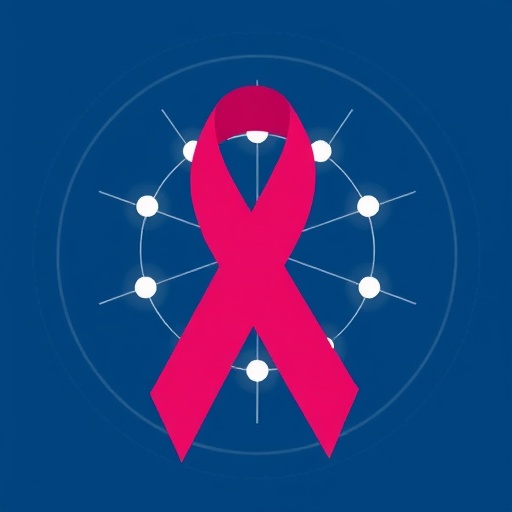In a groundbreaking stride towards transforming cancer monitoring and control worldwide, researchers have unveiled a sophisticated cancer surveillance system that integrates advanced technological methodologies tailored to the unique epidemiological landscape of Iran. This innovative system represents a significant leap forward, addressing longstanding challenges faced by cancer registries, particularly within low-resource environments where traditional data collection and analysis methods have often proved inadequate.
Cancer persists as a dominant cause of mortality globally, with disparities in incidence and outcomes tightly linked to geographic and socioeconomic factors. Existing surveillance systems frequently fall short in delivering timely, spatially detailed insights necessary for precise public health responses. Recognizing these limitations, the development team adopted a visionary approach, blending geographic information systems (GIS) with robust predictive analytics to build a modular, scalable platform capable of handling vast amounts of data with agility and precision.
The initiative commenced with a comprehensive systematic review focusing on key cancer surveillance indicators, ensuring the scientific rigor and relevance of data elements incorporated into the system. This foundational step guaranteed that the ensuing design would reflect both global standards and context-specific needs, a crucial balance for creating a tool that is both universally effective and locally applicable.
Architecturally, the system leverages modern frameworks such as Django and Vue.js, facilitating a modular build that enhances flexibility, ease of maintenance, and scalability. The capacity to process around 20 million records not only showcases the platform’s robustness but also its readiness to manage longitudinal cancer data across various demographic and geographic strata.
Central to the platform’s innovation is its integration of GIS capabilities, allowing for spatial visualization of cancer incidence and mortality rates. This feature empowers health authorities to observe cancer patterns geographically, unveiling clusters and trends that might remain obscure through conventional statistical methods. Such spatial analysis is instrumental in identifying high-risk areas and allocating resources with unmatched precision.
Complementing GIS, the system embeds sophisticated predictive analytics that forecast cancer trends over short, medium, and long-term horizons—specifically over 5, 10, and 20 years. By incorporating global standards mandated by the World Health Organization, these predictive models provide a solid scientific basis for future-oriented planning and intervention strategies, potentially reducing cancer burden significantly through anticipatory action.
Data integrity and usability formed another cornerstone of this project’s success. Critical data elements underwent rigorous validation processes, including Content Validity Ratio (CVR) evaluations surpassing 0.51 and reliability checks via Cronbach’s alpha scoring at 0.849. Such meticulous validation guarantees that the surveillance data are both credible and dependable for policy-making and research.
Real-world applicability was scrutinized through a thorough usability assessment following Nielsen’s heuristic principles. Engaging a diverse panel of experts—including medical informatics specialists, pathologists, and health managers—allowed the team to identify and resolve 85% of usability issues. This collaborative feedback loop enhanced the system’s intuitiveness and functional capabilities, encouraging widespread adoption among healthcare professionals.
Moreover, the system’s design facilitates on-demand analytics, ensuring that decision-makers can extract relevant insights promptly to respond to emerging cancer trends. This responsiveness marks a critical departure from legacy systems burdened by latency and limited interactivity, positioning the platform as a dynamic tool for real-time health surveillance.
Beyond surveillance, the platform serves as a strategic aide in evaluating risk factors linked to cancer incidence, thus contributing to more targeted and effective public health campaigns. By incorporating demographic, environmental, and behavioral data within its analytics framework, the system helps elucidate complex causative relationships, fostering a deeper understanding necessary to mitigate future cancer risks.
The adaptability of this cancer surveillance system resonates beyond Iran, presenting a template for global health infrastructures aiming to modernize their cancer monitoring capabilities. Its scalable architecture and adherence to international standards ensure that other countries, particularly those grappling with similar epidemiological challenges, can tailor the system to their contexts with minimal friction.
At its core, this framework represents a harmonization of tradition and innovation by bridging the gap between classic surveillance methods and contemporary analytical advancements. By harnessing contemporary technologies, the platform transcends conventional boundaries, empowering healthcare systems to rethink cancer control strategies through the lens of precision public health.
The implications of this development extend into policy-making spheres, where equitable distribution of resources is paramount. The system’s granular data and predictive foresight equip authorities with actionable intelligence, ensuring that interventions are not only evidence-based but also strategically localized to areas of greatest need, thereby optimizing the impact of cancer control programs.
This advance underscores the pivotal role of digital health transformation in combating global health crises. By fostering data-driven environments where comprehensive surveillance informs continuous learning and adaptation, the system embodies an evolving paradigm that health systems worldwide must embrace to curtail cancer’s toll effectively.
In conclusion, this multidimensional cancer surveillance system heralds a new era in oncological public health. Its seamless integration of GIS, predictive analytics, and validated data processing crafts a powerful tool capable of reshaping cancer epidemiology. As nations strive toward health equity and sustainability, such pioneering frameworks offer a beacon of hope, transforming data into decisive actions that save lives.
Subject of Research: Advanced cancer surveillance system integrating GIS and predictive analytics tailored to epidemiological and geographical contexts.
Article Title: Design, development, and evaluation of an advanced cancer surveillance system
Article References:
Soleimani, M., Ghazisaeedi, M., Ayyoubzadeh, S.M. et al. Design, development, and evaluation of an advanced cancer surveillance system. BMC Cancer 25, 1482 (2025). https://doi.org/10.1186/s12885-025-14947-7
Image Credits: Scienmag.com




